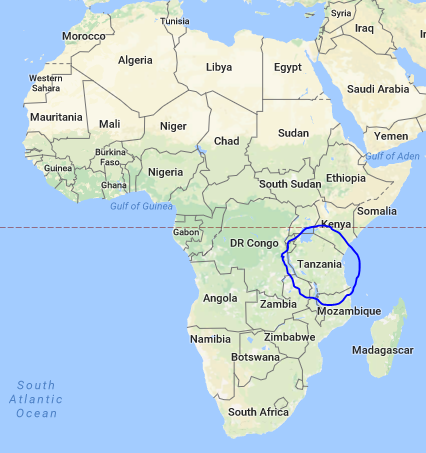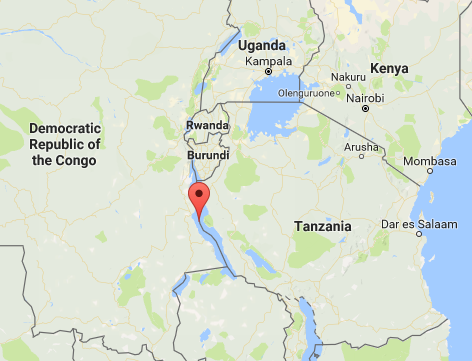This post is the last country profile that I’ll be doing for now as I close in on my evaluation of East Africa.
It covers some of the different aspects of Tanzania, such as its size, history, and whether it can indeed be considered as being in East Africa…
Is it in East Africa?
With perhaps the exception of North Korea, when it comes to international relations, there is a tendency to buddy up with your neighbours.
All over the world, clubs have formed between groups of countries who decide it’s a good idea to share common (metaphorical) ground with some of the core functions that they each undertake.
You have ASEAN in East Asia, UNASUR in South America and, well, the European Union.
One such club that I certainly had in my head was that of East Africa, though after spending time on my trip in the Eastern part of Africa I’m not 100% clear of everyone who’s involved…
Visa
When I got to the stage of scoping out this “try before you buy” tour of East Africa I had to undertake a few cursory administrative tasks.
One fairly fundamental box to tick is the visa, and upon discovering this thing called the East Africa Tourist visa I thought well that sounds perfect, sign me up.
Turns out though, that whilst Rwanda, Uganda and Kenya are all quite chummy when it comes to crossing between borders, Tanzania likes to think of itself a little.
The visa which allows travel between East Africa countries does not permit you enter Tanzania.
This was far from the end of the world, but just a “Hmmm, OK” moment before I arrived.
Location
Taking a Google-Maps-zoomed-out view of Africa you can see that Tanzania is pretty big. The other East African countries I’ve visited could all fit inside with room to spare.

Its land mass is the 13th, a little bigger than Nigeria and a bit smaller than Egypt. For those of you (it might just be me) storing up a bank of pub quiz trivia, Algeria is the largest, 5,000 times bigger than Seychelles, the smallest.
Anyway, a side effect of being quite chunky is that Tanzania spreads itself quite far down the continent.
There’s another club for the Southern African lot (the Southern African Development Community) which Tanzania also likes to associate itself with.
Trade etc.
When goods move between countries there is tendency for the government to charge money.
This is for a number of reasons (filling the coffers rather than charging the population, promoting local businesses by making foreign stuff artificially more expensive) but a big one is: well they charge us when we do it.
Reams could written on international trade, however the short version from (some) policy makers is that if the main reason for charging extra when people trade is reciprocity, then if you both agreed to stop, the difference should even itself out and consumers would get lower prices.
This is one of the pillars of many clubs that get together to trade (like the European Union): make it free to move goods between members of the club.
When it comes to trade there is the East African Community which, at least in writing, promotes free/ low tariff trade between the member countries.
Tanzania is a part of this one (in fact its President is the Chairman), though word on the street is that all the countries aren’t great at keeping their promises.
Anecdotal
From speaking to people, most consider Tanzania to be part of East Africa.
When I tell people that this is the region I’m scoping out it is more likely that people enquire whether or not I’m heading to Burundi or South Sudan which, by some measures, have also been considered as East Africa.
Those two countries though failed the “low risk of being killed” criteria and so for now I’ll just stick with what I’ve got.
On reflection, maybe I’m just overthinking the whole having to get an extra visa thing. Tanzania is by most standards a country in East Africa.
Name
If you were to ask who belonged to what 60 years ago though, the task above would’ve been even more cumbersome.
You see, historically Tanzania has been two entities.
For a number of reasons in the early 1960s the two (mainland Tanganyika and the island of Zanzibar) decided to put aside their differences and become one nation.
In size terms there was a bit of a Timon and Pumba situation, and so I guess when it came to negotiation, Tanganyika said “well if we’re both getting three letters, at least we’re going first”.
Thus Tanganyika and Zanzibar agreed to make friends and become Tanzania.
Language
From my trip through the East Africa region this is something that is noticeably different to the others.
Similar to Uganda, there are loads of tribes, each with a distinct language. Unlike Uganda, and indeed the other countries I’ve visited, English is not being pushed.
Most of the population speak Swahili, like they do in Kenya, but here it is much more part of daily life and you can’t expect to be able to have a conversation in English with the person driving you in a tuk-tuk.
Government
Another formative part of Tanzanian culture is its political past.
In colonial times it passed hands from Germany to Britain after the First World War and at the time of the Tan-Zan unification the first elected president was distinctly socialist.
This left leaning bias is baked into Tanzanian politics and whilst I can’t give a thorough summary about the country’s civil life, what I’ve read involves a lot of words like nationalisation.
The latest president is causing a bit of a stir by clamping down on companies paying taxes and generally making it tough for foreign investors to operate in the country. I’ve heard varying accounts of whether the sentiment is pro or anti foreign entrepreneurs, so let’s just say it’s inconclusive.
Either way, a strand of the “let’s get on with it ourselves” logic has been to ban the importation of second hand clothes. The idea being that it will create more employment for local tailors who won’t have to compete with the free stuff shipped in by the ton.
Interestingly it is something that other countries have spoken about, but the founder of Kampala Fashion Week (in Uganda) who told me about this one and she singled out Tanzania as being the leaders. You can listen to our chat here.
Anyway, unlike Rwanda which prides itself on being business friendly and open to foreign investment, the general ethos in Tanzania seems to be less open-armsy.
Congeniality
As history tells us Uganda, Kenya, and most drastically in Rwanda, there is a tendency for tribal differences within a country to lead to violence once country borders are drawn and outsiders with resource operate favouritism.
Tanzania, I am told, is different.
It still has people identifying themselves with one of tens, if not hundreds of tribes, but this is not seen as being as problematic as in other countries.
This is apparently owing to the socialist start to the country when it transitioned into independence, and the first president being able to inspire the population to put aside their tribal pasts and instead align themselves as Tanzanians going forward.
I couldn’t find too much written evidence to verify this, and so am relying on conversations with people who live here and a passage from a book I remember reading a few months ago. Anyway, in the process of Googling I found out there is a tribe in the country where straight women are marrying each other. Who knew.
Geography
We’ve spoken a bit about the size of the country and within in all this space are the drivers of the Tanzanian economy which are very similar to the other countries we’ve seen. Namely food and animals.
Agriculture
Vast swathes of the country live in rural areas and support themselves from what comes from the land.
Other than the classic staples of maize and tea, the thing which is abundant here is cashew nuts.
Safari
The other big contributor to the economy is the wildlife.
All the big names are passing through Tanzania at some point, and there are also some geographical features which which add a bit more to the trip.
A pretty unique thing is the Ngorongoro crater, a huge dug out bit of land which apparently the wildlife can’t walk out of.
Highs and lows
A little fact is that Tanzania has the highest and lowest points on the African continent.
Kilimanjaro at the north rises to 5,895m making it about two thirds of Everest and 13% higher than the continent’s second, Mount Kenya.
For the low point, we look west.

It’s a lake which goes down to 350m from a big divot through the Great Rift Valley and then rain filling it up with water. It is borders the DR Congo, however with it being named after Tanganyika (which we know know was the forebearer of Tanzania) the rule of shotgun reasons that they should get the credit.
Conclusion
This closes the fourth country profile from the tour of East Africa. If you’re interested to compare, you can look at Rwanda, Uganda and Kenya too.
I’ll be getting a better idea of the business side of the country, and then setting out a plan of what and where I think the best opportunities in the region exist…